Why does my Samsung WF42H5200AP show an unbalance error?
- AAngela ParkAug 22, 2025
An unbalance error on your Samsung Washer is typically caused by the laundry load. Adjust the laundry load as needed.
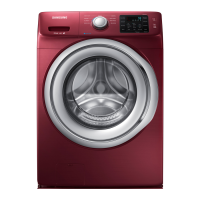
Why does my Samsung WF42H5200AP show an unbalance error?
An unbalance error on your Samsung Washer is typically caused by the laundry load. Adjust the laundry load as needed.
Why does my Samsung WF42H5200AP Washer have a drain error?
A drain error in your Samsung washer can occur due to several reasons. It could be caused by a damaged pump motor impeller, supplying the wrong voltage to the parts, a part fault, freezing during winter, a clogged drain hose, or obstructions inside the drain pump assembly such as rubber bands, bills, cotton, hair pins, or coins. To resolve this, replace the pump motor impeller if damaged, ensure the correct voltage is supplied, replace any faulty parts, remove any freezing, clear the drain hose of any foreign materials, and clear any obstructions inside the drain pump assembly.
How to troubleshoot a Samsung WF42H5200AP Washer with a water supply error?
To troubleshoot a water supply error on your Samsung washer, consider these potential causes: foreign material entering the water supply valve, a disconnected water supply valve terminal, incorrectly connected warm water and rinse connectors, a disconnected PCB terminal from the drain hose to the detergent drawer, or a folded or torn transparent hose. Try cleaning the water supply valve, reconnecting the water supply valve terminal, rearranging the warm and rinse connectors, connecting the PCB terminal, and inspecting the transparent hose for folds or tears.
Why does my Samsung WF42H5200AP Washer show a power error?
A power error on your Samsung washer can be due to several factors. These include issues with the consumer’s power conditions, under or over voltage supply, incorrect plug receptacle usage, or a main PBA fault. To address this, ensure the power supply voltage is correct, check the voltages, ensure the correct plug receptacle is in use, and replace the main PBA if necessary.
What to do if my Samsung WF42H5200AP has a communication error?
If your Samsung washer displays a communication error, it indicates that the signals between the sub and main PBAs are not being sensed. This can be due to incorrect or loose connections. Inspect the connector connections between the sub and main PBAs, look for loose connections, and inspect and repair any faulty soldering on the sub PBA C/Panel.
How to fix a Samsung WF42H5200AP Washer when the water level sensor is not working?
If the water level sensor in your Samsung washer is not working correctly, it could be due to several reasons: the hose is damaged, clogged, or folded; too much lubricant on the air hose; hose disengagement; a faulty part; a disengaged water level sensor terminal; or a main PBA fault. Check the hose for damage, clear any blockages, straighten the hose, reduce lubricant, ensure proper hose engagement, replace any faulty parts, reconnect the terminal, or replace the main PBA.
Why does my Samsung WF42H5200AP have an overflow error?
An overflow error in your Samsung washer can occur because water is being supplied continuously due to a failure in water level detection. This can be caused by a clogged drain hose, an injection error, freezing, foreign material in the water supply valve, or a degraded water level sensor. To resolve this, inspect the water level detection system, clear the drain hose, remove any freezing or foreign material, and replace the water level sensor if it is degraded.
What causes a Samsung Washer to display a heater error?
A heater error in your Samsung washer may be caused by a short-circuited or disconnected washing heater, an error in the washing heater within the tub, or issues with the water level sensor leading to overheating. To resolve this, replace or reconnect the washing heater, inspect and resolve any heater or temperature sensor faults, and address any underlying water level sensor issues.
What causes a switch error (main relay error) on my Samsung WF42H5200AP Washer?
A switch error (main relay error) on your Samsung washer can be triggered by several factors. These include continually pressing the Power button, a jammed or stuck switch, over-tightening the screws holding the sub PBA, continually pressing a button other than the Power button, deformation of an internal plastic injection part or over-tightening a screw for assembling the sub PBA. To resolve this, release the Power button, fix any deformations of the control panel or button, loosen the screws that hold the sub PBA, release other buttons, check and repair the internal plastic parts and loosen the assembly screws.
| Door hinge | Left |
|---|---|
| Loading type | Front-load |
| Product color | Platinum |
| Built-in display | Yes |
| Appliance placement | Freestanding |
| Drum capacity | - kg |
| Maximum spin speed | 1200 RPM |
| Noise level (wash) | - dB |
| Delayed start timer | - |
| Number of washing programs | 9 |
| Water consumption per cycle | - L |
| Energy consumption washing per cycle | - kWh |
| Package depth | 878.8 mm |
| Package width | 744.2 mm |
| Package height | 1060 mm |
| Package weight | 92079 g |
| Sustainability certificates | ENERGY STAR |
| Annual energy consumption washing | 95 kWh |
| Depth | 838.2 mm |
|---|---|
| Width | 685.8 mm |
| Height | 983 mm |
| Weight | 88000 g |
Guidelines for safe operation and maintenance procedures to prevent accidents during servicing.
Detailed overview of product capabilities and technologies like BUBBLE and VRT.
Technical details and dimensions of the washing machine, including capacity and power consumption.
Comparison of product specifications against other models to highlight differences.
Details of optional accessories, their part codes, and quantities.
List of specialized and general tools required for servicing the washing machine.
Visual guides illustrating the step-by-step process for disassembling various machine parts.
List and causes of common error codes displayed by the washing machine.
Step-by-step solutions and corrective actions for resolving specific error codes.
Diagram and component layout of the main circuit board.
Detailed circuit connections and pin assignments for the main PCB.
Diagram and component layout of the inverter circuit board.
Detailed circuit connections and pin assignments for the inverter PCB.
Diagram and component layout of the sub circuit board.
Detailed circuit connections and pin assignments for the sub PCB.
Schematic showing electrical connections between major components.
Explanation of the model naming convention and project structure.
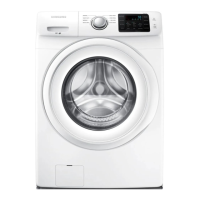
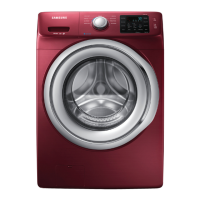

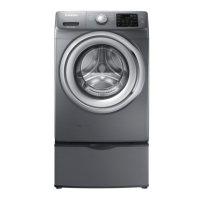
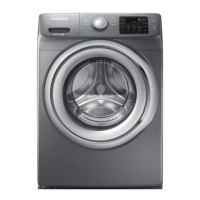



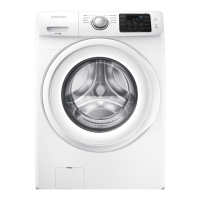
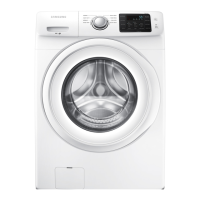
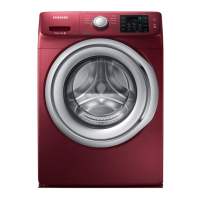

